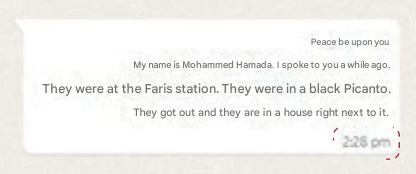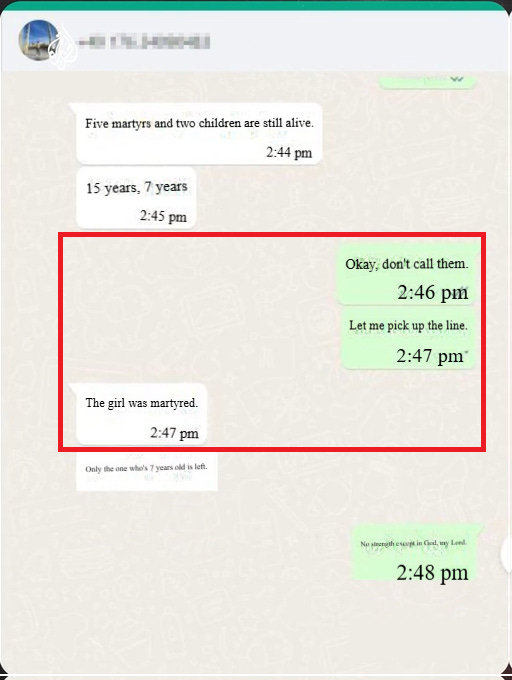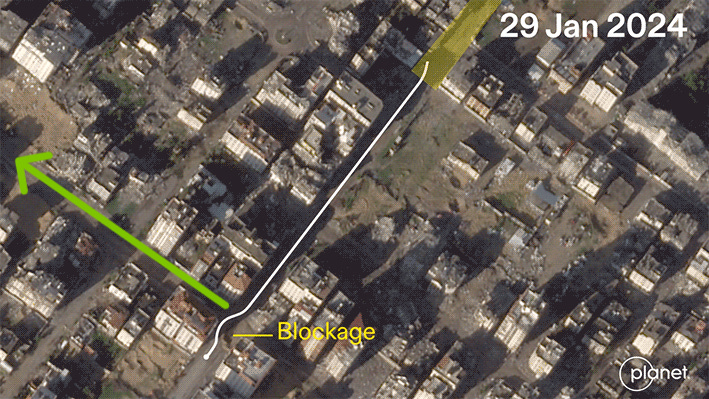New Analysis Questions Narrative of Hind Rajab's Death, Citing Inconsistent Testimony and Flawed Data
Mark Zlochin challenges claims that Hind Rajab was deliberately killed by Israel, citing how shifting testimonies and omitted evidence transformed a chaotic warzone incident into an atrocity narrative

Independent analyst Mark Zlochin has published an investigation challenging the widely-circulated account that six-year-old Hind Rajab was deliberately executed by Israeli forces in Gaza, arguing that major media outlets transformed a chaotic battlefield incident into a narrative of intentional atrocity through evolving testimonies, omitted evidence, and flawed forensic analysis.
The tragic January 29, 2024 incident in Gaza City’s Tel al-Hawa neighborhood resulted in the deaths of Hind Rajab and six family members. Major outlets including Al Jazeera, BBC, and The Washington Post, along with investigative anti-Israel group Forensic Architecture, portrayed the event as Israeli tanks deliberately firing on a car with trapped children. Zlochin’s analysis disputes this characterization.
Combat Zone Context Removed
According to Zlochin’s findings, the initial reporting by Al Jazeera — which set the tone for subsequent investigations — described a car under fire while moving through an active combat zone. The vehicle had plastic-covered windows, was traveling north against evacuation orders during rainy conditions with poor visibility, and was in an area of intense Hamas-IDF clashes.
When they reconstructed the incident again in February, however, Al Jazeera had changed the account to describe a stationary car parked at a gas station. Zlochin contends this revision removed critical context that would explain potential misidentification of the vehicle as a threat, instead framing the incident as an unambiguous attack on civilians.
Critical Evidence Omissions
Zlochin identifies several key omissions in media reconstructions. Most notably, he points to Arabic WhatsApp messages visible in Al Jazeera’s own screenshots but never mentioned in English reporting. One message stated family members “got out and they are in a house” near the car—contradicting the “trapped inside” narrative central to the execution claim.

Additionally, the messages show Hind’s uncle, not Red Crescent rescuers, informed them of cousin Layan’s tragic death—conflicting with accounts that rescuers heard her being shot during a phone call. Zlochin argues the timestamps leave no plausible window for this widely-publicized call to have occurred, raising questions about whether the dramatic audio recording was authentic.

Forensic Analysis Challenged
The Forensic Architecture investigation, commissioned by Al Jazeera, relied heavily on the contested audio recording. Zlochin’s review of the complete recording identifies multiple weapon signatures, including firing rates consistent with AK-47s used by Hamas rather than only Israeli weapons. He notes FA documented 64 gunshots but only 30 corresponding bullet holes, suggesting many rounds struck other targets—evidence of crossfire rather than focused targeting.
Zlochin also disputes FA’s claim that tank crews had “clear line of sight” to children inside. According to his analysis, multiple factors—plastic-covered windows, poor weather, the firing angle, and the children reportedly hiding crouched in the back seat—would have made them invisible to shooters.
He notes FA’s pattern of conclusions favoring certain narratives, including their stance on the Al-Ahli hospital explosion that contradicted U.S. and French intelligence assessments.
Shifting Timeline Creates Six-Hour Gap
The reported timeline changed substantially across accounts. Initial reports placed the incident in early afternoon. Forensic Architecture’s June investigation moved it to early morning. An October 2024 Sky News interview introduced a precise time—8:10 a.m.—for the first time.
This creates an unexplained six-hour gap between the alleged attack and the first documented contact with rescuers. Zlochin questions why this discrepancy went unaddressed and why such fundamental details emerged only months later through evolving maternal testimony.

Misidentification Amid Combat Chaos
Zlochin’s analysis argues the evidence points to tragic misidentification during combat chaos—a scenario involving poor visibility, active crossfire, and a vehicle that could reasonably be perceived as hostile approaching military positions—rather than deliberate targeting of known civilians.
“Recognizing these complexities does not diminish the human loss,” Zlochin writes, but rather “restores factual integrity to a dramatic event that has been repeatedly weaponized for political ends.”
The full investigation can be read here.


